Low Volume Injection Molding
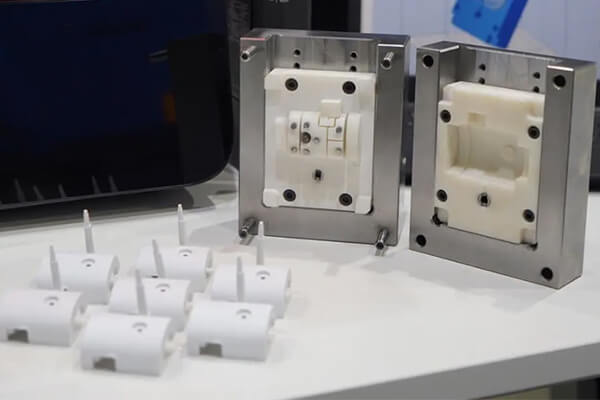
What Is Low Volume Injection Molding?
Traditionally, because of high tooling costs, injection molding is usually regarded as a manufacturing process for high-volume and mass-scale production. Injection molding is a popular method for manufacturing parts, but it’s not always economical or feasible for small-batch injection molding. That’s where low-volume injection molding comes into play.
Low volume injection molding is a production process that is particularly suitable for short runs, typically in the range of hundreds to thousands of parts. It’s a cost-effective solution for projects that don’t require the high quantities often associated with traditional injection molding, which is typically optimized for runs of tens of thousands to millions of units.
Low volume injection molding utilizes the same basic process as traditional injection molding: melting plastic or another suitable material, injecting it into a mold, cooling it, and then ejecting the finished part. However, it often uses different equipment or techniques to make it more suitable and cost-effective for small-run injection molding and small batch plastic manufacturing.
Benefits of Low Volume Injection Molding
There are several significant benefits to low volume injection molding, including:
- Cost-effectiveness
Compared to small run injection molding, traditional injection molding can be prohibitively expensive. Low volume injection molding, however, is much more affordable because it requires less upfront investment in tooling and setup. - Flexibility
Low volume production allows for greater flexibility. Companies can more easily make design changes between batches without the cost and time penalties associated with changing high-volume production molds. - Lead time
Low volume injection molding can often deliver parts in a matter of days or weeks, rather than the months it can take to get high-volume production molds made and set up.
Applications of Low Volume Injection Molding
Low volume injection molding is used in a wide variety of industries and applications, including:
- Prototype Development
Low volume injection molding is ideal for producing high-quality prototypes that can be used for testing and validation before moving on to high-volume production. - Bridge Production
This low volume injection molding process can serve as a “bridge” between initial prototype development and high-volume production, allowing companies to start selling and testing their products in the market while the final production processes are being set up. - Custom and Specialty Parts
For products that require custom or specialty parts in relatively low quantities, low volume injection molding is often the most cost-effective and practical solution.
Who Needs Low Volume Injection Molding?
Low volume injection molding is suitable for companies or individuals who need to produce small quantities of plastic parts. This could include:
- Startups
Startups typically have limited budgets and need to produce a small number of parts to test the market or validate their product design before investing in mass production. - Small businesses
Small businesses may need to produce a limited number of parts for custom applications, and prototypes, or to fulfill small orders. - Product designers
Product designers may need to produce a small number of parts to test their designs and ensure that they function as intended. - Replacement part manufacturers
Companies that manufacture replacement parts may only need to produce a small number of parts to meet the demand for a specific product. - Medical device manufacturers
Medical device manufacturers may require low volume injection molding to produce small quantities of custom parts or prototypes for testing and validation. - Aerospace and defense companies
Aerospace and defense companies may need to produce small quantities of specialized parts for military or space applications.
Are you looking for the right manufacturing process for your new plastic product? If you have questions about plastic manufacturing processes, material selection, or input costs, please contact us. We are more than happy to help you.
Materials Used in Low Volume Injection Molding
Common materials used in low volume injection molding include a wide range of thermoplastics, thermosetting polymers, and elastomers, such as ABS, PP, PE, PC, PS, PA, POM, PMMA, TPU and so on. The choice of material will depend on the desired properties of the finished parts, such as their strength, flexibility, and resistance to heat or chemicals.
Study more plastics…
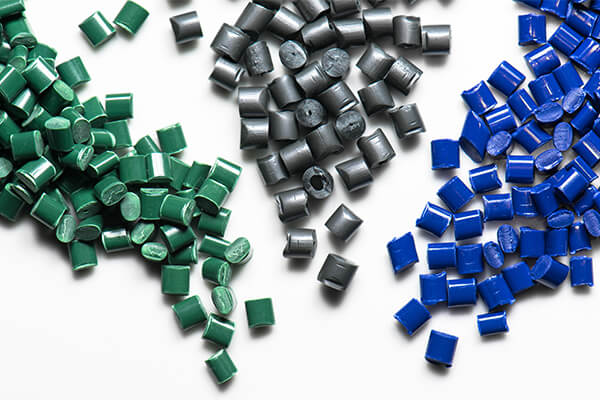
What Are Low Volume Injection Molding Processes?
Low volume injection molding is a manufacturing process used to produce small quantities of plastic parts. It is typically used for prototyping, bridge tooling, and low volume production runs. The low volume injection molding process involves injecting molten plastic material into a mold cavity, which is then cooled and solidified to form a part. There are several processes used for low volume injection molding, each with its own advantages and limitations. Next, we will discuss some of the most commonly used processes for low volume injection molding.
Conventional Injection Molding
Conventional injection molding is the most common process used for high-volume production runs, which usually uses steel mold. However, it can also be used for low volume runs as well. In this process, the plastic material is melted and injected into steel mold cavities under high pressure. The steel injection mold is then cooled to solidify the plastic and the part is ejected. One of the advantages of this process is that it can produce complex geometries with tight tolerances. However, the high cost of tooling and long lead times make it less ideal for low volume runs. If plastic products require complex structure and high precision, choosing the steel mold to carry out injection molding processing, which can get a stable quality of the final product.
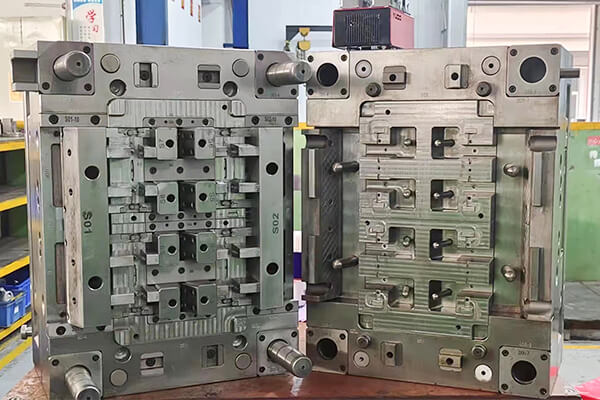
Rapid Injection Molding
Rapid injection molding is a process that uses a combination of CNC machining and injection molding to produce small quantities of parts quickly and cost-effectively. In this process, a mold is machined out of aluminum or steel using CNC machining techniques. The mold is then used to produce the part using conventional injection molding techniques. One of the advantages of this process is that it can produce parts with complex geometries in a relatively short amount of time. However, the cost of tooling is still relatively high compared to other low volume injection molding processes.
Aluminum Injection Molds (Bridge Tooling)
Aluminum injection molds is an intermediate solution that uses aluminum molds to produce low to medium quantities of parts. It serves as a temporary option while waiting for high-volume steel molds to be fabricated. Aluminum injection molds are mainly used to produce products with small quantity and general precision requirements. Service life of Aluminum injection molds is much shorter than the steel molds. If we want to achieve the use conditions of the same grade of steel mold, it is necessary to treat the aluminum material accordingly, which will increase the low volume manufacturing cost of aluminum injection molds and offset the advantages of the low volume manufacturing cost.
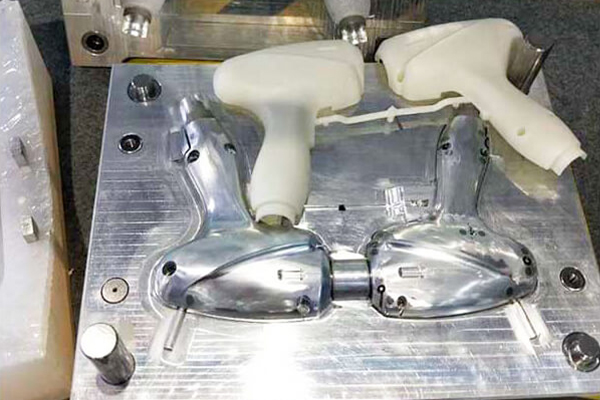
3D Printed Molds (Prototype Injection Molds)
3D printing has revolutionized many manufacturing processes, including injection molding. In this process, a mold is 3D printed using a high-temperature material such as thermoplastic polyurethane (TPU) or polyetherimide (PEI). The mold is then used to produce the part using conventional injection molding techniques. One of the advantages of this process is that it can produce parts with complex geometries in a relatively short amount of time, and at a lower cost than conventional injection molding. However, the mold material is not as durable as steel or aluminum, so the number of parts that can be produced is limited.
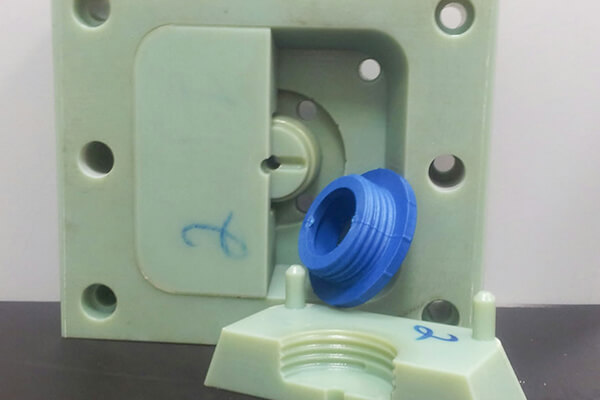
Soft Tooling
Soft tooling is a process that uses silicone or other soft materials to produce molds for low volume runs. In this process, the mold is produced by pouring silicone into a master model of the part. The silicone mold is then used to produce the part using conventional injection molding techniques. One of the advantages of this process is that it can produce parts with complex geometries in a relatively short amount of time, and at a lower cost than conventional injection molding. However, the mold material is not as durable as steel or aluminum, so the number of parts that can be produced is limited.
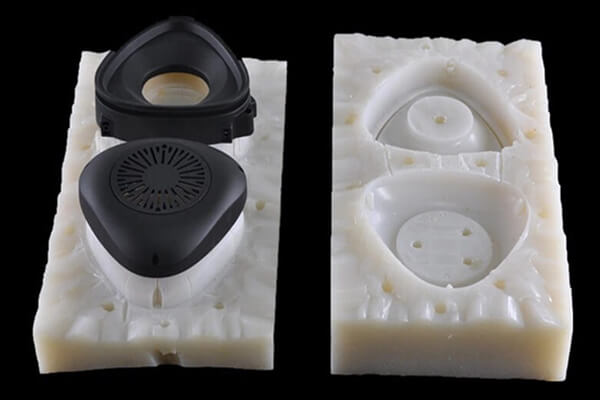
Choosing the Right Low-Volume Injection Molding Manufacturer
Choosing the right low-volume plastic injection molding services is crucial for achieving high-quality parts while keeping costs down. At Sungplastic, we offer a comprehensive range of low-volume plastic injection molding services tailored to meet the unique needs of our clients.
Our team of experienced engineers and technicians works closely with clients to ensure that their specific requirements are met. We provide customized solutions for small batch production, prototyping, and end-use parts, using the latest technology and materials. Our services are ideal for startups, small businesses, product designers, and medical device manufacturers who require small quantities of high-quality plastic parts.
We are committed to maintaining the highest standards of quality and we use only the highest-quality materials to ensure durability and longevity. In addition to low-volume plastic injection molding services, we also offer a range of value-added services such as assembly, post-processing, and finishing, to provide our clients with a one-stop-shop for their manufacturing needs.

Step-By-Step Workflow for Low Volume Injection Molding
The process of low-volume injection molding assumes that the design of the desired part has been finalized and that you have acquired all the necessary materials and equipment for the injection molding process. The detailed steps involved in this process are as follows:
Design Preparation
- Create or obtain a 3D model of the part that you intend to manufacture using injection molding.
- Ensure that the part design is optimized for injection molding, taking into consideration factors like draft angles, wall thickness, and the placement of gating locations.
- If necessary, seek guidance from a design engineer or an injection molding expert to review and enhance the part design to suit the requirements of low-volume production.
Mold Selection
- Determine the type of mold that is most suitable for your low volume production needs. Options include rapid tooling, 3D-printed molds, soft tooling, or bridge tooling.
- Select the appropriate material for the mold based on your production specifications and budget constraints.
Mold Fabrication
- Proceed to fabricate the mold using the chosen method. If you opt for rapid tooling or 3D-printed molds, these can be manufactured relatively quickly in comparison to traditional steel molds.
- If you’re utilizing soft tooling or bridge tooling, adhere to the specific procedures for crafting molds using the selected materials.
Material Selection
Choose the suitable plastic resin for the injection molding process, considering factors such as material properties, the specific requirements of the part, and overall cost considerations.
Injection Molding Setup
- Arrange and set up the injection molding machine, ensuring that it is in optimal working condition.
- Carefully install the chosen mold into the machine, ensuring secure attachment.
Material Preparation
- Load the selected plastic resin into the hopper of the injection molding machine.
- Adhere to the manufacturer’s guidelines for handling and preparing the material, which may include drying if deemed necessary.
Injection Molding Process
Initiate the injection molding process as per the operating instructions of the machine.
The process typically involves the following stages:
- Plasticizing: The plastic resin is heated and transformed into a viscous liquid state.
- Injection: The molten plastic is introduced into the mold cavity under elevated pressure.
- Cooling: The mold is cooled to solidify the plastic and shape the part.
- Ejection: The molded part is released from the mold.
Quality Control and Inspection
- Thoroughly inspect the manufactured parts for any defects or irregularities.
- Ensure that the produced parts meet the required quality standards and specifications.
Post-Processing and Finishing
- Remove any excess material or flash from the molded parts.
- Carry out any necessary post-processing tasks, such as trimming, drilling, or assembly, based on the final requirements of the part.
Packaging and Shipping
- Adequately package the completed parts to safeguard them during transit and handling.
- Arrange for the shipping of the finished parts to their designated destination or customer.
Throughout the entirety of the low-volume injection molding process, it is crucial to continually monitor and adjust parameters as needed to ensure the production of parts of the highest quality. Always adhere to safety protocols and industry best practices to ensure the well-being of personnel and the proper operation of equipment.
How to Determine the Suitability of Small Batch Injection Molding
Determining the suitability of small batch injection molding involves considering several factors to ensure that it is the appropriate production method for your needs. Here are some factors to consider when determining the suitability of small batch injection molding:
- Quantity
Small batch injection molding is typically suitable for producing quantities of up to a few thousand parts. If you need to produce a larger number of parts, this method may not be the most cost-effective option. - Complexity
Injection molding is suitable for producing complex parts with intricate designs and details. If your part is simple and doesn’t require a high level of detail, other production methods may be more appropriate. - Material
Injection molding can produce parts using a wide range of materials, including different types of plastics. If your part requires a specific material that is not suitable for injection molding, this method may not be appropriate. - Cost
Small batch injection molding can be a cost-effective solution for producing a small number of parts. However, if the cost per part is too high, it may not be the most economical option. - Lead time
Injection molding typically requires creating a mold tool, which can take time to produce. If you need parts quickly, other production methods may be more suitable,such as rapid prototyping. It has a low volume manufacturing cycle as fast as one day. But the cost of products made by rapid prototyping is much higher than the unit price of injection molded products. - Quality
Injection molding can produce high-quality parts with consistent accuracy, making it suitable for applications where precision is critical.
By considering these factors, you can determine whether small batch injection molding is the appropriate production method for your needs. If you are unsure, it may be helpful to consult with us to discuss your requirements and explore the best production options for your project.
What is Our On-Demand Manufacturing?
Sungplastic offers an efficient and cost-effective solution for producing hundreds of thousands of molded parts through our on-demand manufacturing service using aluminum tooling in injection molding. This process can serve as your primary production method, and it’s an excellent way to transition from prototyping to low-volume production of molded parts.
As a full-service low volume manufacturing provider, we can help you validate your part design and manage inventory overhead by producing parts only when demand dictates. This approach also allows you to optimize your supply chain, making it more agile in managing demand volatility.
Moreover, our cost-effective aluminum tooling provides a bridge to mass production of plastic parts, allowing you to transition without committing to a significant investment in steel tooling. This way, you can streamline your production process and reduce costs while maintaining high-quality standards.
Our on-demand, low volume production approach offers numerous benefits, including cost-effectiveness, efficient supply chain management, and the ability to validate part design and manage inventory overhead.
Low-Volume Injection Molding vs. Traditional Injection Molding
Traditional injection molding stands as one of the foremost processes in plastic manufacturing, offering cost-effectiveness and exceptional repeatability for high-quality parts in large-scale production. Consequently, it finds extensive use in mass-producing identical components with precise tolerances.
The injection molding process is swift and intense, utilizing high heat and pressure to inject molten material into a carefully crafted mold. The choice of molten material depends on the scope of the manufacturing project, with popular options like ABS, PS, PE, PC, PP, or TPU, though even metals and ceramics can undergo injection molding. The mold itself comprises a cavity designed to closely mirror the final features of the desired part.
Traditionally, molds are crafted from metal using CNC machining or electric discharge machining (EDM). These industrial methods are costly and require specialized equipment, advanced software, and skilled labor. As a result, producing a metal mold typically takes four to eight weeks and incurs costs ranging from $2,000 to $100,000+, depending on the part’s shape and complexity. For smaller part quantities, the expenses, time, specialized equipment, and skilled labor associated with fabricating metal molds through conventional means often make injection molding at this scale unfeasible.
However, an alternative to metal mold fabrication exists. By employing in-house 3D printing, injection molds can be created for prototyping and low-volume production, significantly reducing costs and lead times compared to metal molds while maintaining high-quality and reproducible parts.
Desktop 3D printing presents an efficient and cost-effective solution for rapidly fabricating injection molds. With minimal equipment requirements, it saves CNC time and skilled labor for other valuable tasks. Manufacturers can harness the speed and flexibility of in-house 3D printing to create molds that, when coupled with injection molding, can deliver series of units from common thermoplastics within days. This approach enables the realization of intricate mold designs that might be challenging through traditional methods and can be utilized on both desktop and industrial molding machines, fostering greater innovation in development teams. Moreover, product development benefits from the ability to iterate on designs and test end-use materials before investing in costly hard tooling.
While 3D printing molds offer significant advantages when used appropriately, certain limitations should be considered. Expectations should not equate 3D printed polymer molds with machined metallic ones in terms of performance. Critical dimensions may be harder to meet, and longer cooling times may be required due to slower thermal transfer in plastic. Additionally, 3D printed molds can be more susceptible to breaking under heat and pressure.
Despite these limitations, companies in various industries are integrating 3D printed molds into their short-run injection molding workflows, allowing them to quickly produce hundreds to thousands of parts. Whether designing functional prototypes with end-use materials, manufacturing parts during pilot production, or creating low-volume or custom end-use parts, 3D printing injection molds proves to be a cost-effective and expeditious method for limited quantity part production.
For low-volume production, machining molds out of aluminum presents a viable alternative, catering to quantities ranging from 500 to 10,000 parts, and reducing fixed manufacturing costs. Compared to steel, machining aluminum is five to ten times faster, causing less wear on the tooling, resulting in shorter lead times and decreased expenses. The superior heat conductivity of aluminum over steel also allows for reduced reliance on cooling channels, streamlining mold designs and maintaining short cycle times.
In the realm of low-volume injection molding, the type of injection press used has minimal impact on the process. These injection machines are costly, have stringent facility requirements, and demand skilled labor. Consequently, most enterprises choose to outsource mid- and high-volume production to service providers and contract manufacturers.
FAQs about Low Volume Injection Molding
- Q1: Can design changes be made easily in low volume injection molding?
Yes, low volume injection molding allows for easier design changes and iterations. Modifications to the molds are less expensive and quicker, making it feasible to adapt the design during the production process. - Q2: Can low volume injection molding be used for overmolding or insert molding?
Yes, low volume injection molding can be used for overmolding and insert molding processes. Overmolding involves adding a second material over an existing part or substrate, while insert molding involves placing an insert, such as a metal component or another pre-formed part, into the mold and then molding plastic around it. - Q3: Are there any limitations in terms of part size for low volume injection molding?
Low volume injection molding is typically suitable for producing small to medium-sized parts. The size of the mold and the available equipment may limit the production of very large parts.
Get a free quote and design analysis today.
We’ll reply you within 6 working hours.
We respect your privacy.
+86 139 2927 4777 (WhatsApp, Wechat)
Now Is The Time To Embrace The Super Flexible Low Volume Injection Molding Solutions!
Here is your chance to avail yourself of the most efficient low-volume injection molding, a renowned manufacturing process for producing small quantities of plastic parts. Sungplastic is a trusted injection molding manufacturer that vouches that these solutions are ideal for various purposes, such as prototyping, bridge tooling, and low-volume production runs. So, if you are looking for credible low-volume injection molding solutions, look no further.
Why trust Sungplastic as your injection molding company?
- A systematic process:
Serving as a credible low-volume injection molding company, Sungplastic follows a process that involves injecting molten plastic material into a mold cavity, which is then cooled and solidified to form a part. Efficiently and affordably, making hundreds of functional prototypes and regions can accelerate product development, reduce costs and lead times, and bring better products to market, ultimately contributing to creating business value. You can invest in your projects and produce high-quality and repeatable parts by choosing to avail quality services from top injection molding manufacturers.
- Varied applications:
Another big reason to invest in tailored solutions from our injection molding company is that these hold excellent suitability in varied applications.
Low-volume injection molding is employed in numerous sectors and uses, including:
Modeling and Development:
Before moving on to high-scale production, high-quality prototypes can be produced using low-volume injection molding for testing and validation.
Bridge Building:
While the final production procedures are being set up, businesses can start selling and testing their products on the market thanks to this low-volume injection molding method, which acts as a “bridge” between developing the initial prototype and high-volume manufacturing.
Specialty and Custom Parts
Low-volume injection molding is the most economical and practical choice for products that need specialized or custom parts in small quantities.
- Use of quality ingredients:
At Sungplastic, a trusted injection molding manufacturer, only quality ingredients are used in low-volume injection molding. Key elements used include Numerous thermoplastics, thermosetting polymers, and elastomers, including ABS, PP, PE, PC, PS, PA, POM, PMMA, and others, frequently used in low-volume injection molding. The preferred characteristics of the finished pieces, such as their strength, flexibility, and resistance to heat or chemicals, will determine the material choice.
- Support from an expert team:
We strive to provide high-quality, affordable components. Sungplastic provides a variety of low-volume injection molding services to meet customer needs. Our professional engineers and technicians use the latest technology and materials to create specific solutions for small-batch production, prototyping, and end-use parts to meet the client’s individual needs.
